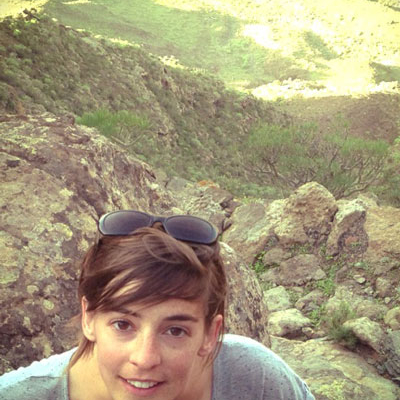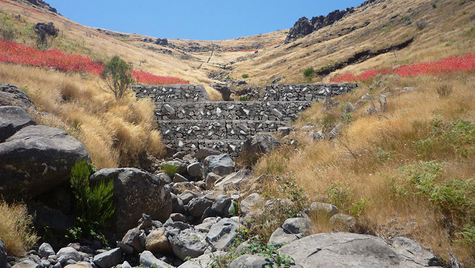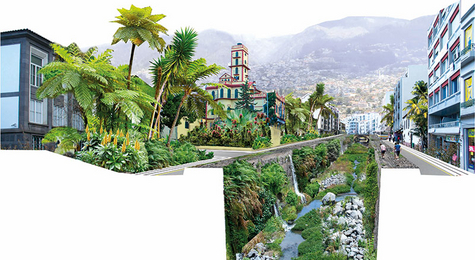Leen Vanthuyne
- Opleiding
- Landschapsarchitectuur
- Lichting
- 2014
- Website
- www.leenvanthuyne.com
- leen@leenvanthuyne.com
- Contact
- LinkedIn
"Never let your work drive you into a corner."
(Reif Larsen, The Selected Works of T.S. Spivet)
Ravines Revaluated
An attractive storyline for the Ribeiras of the city of Funchal, capital of Madeira Island.
This project is two-fold. It tackles the problem of mudflows, a recurring phenomenon on Madeira Island, and at the same time presents a case for a much deserved revaluation of the public face of the three ravines of Funchal, from the mountains to the coastline.
‘The ravine is a vertical landscape, a geological cross section from mountain down to ocean, a chasm that guides the young and fearless tourist through the layered strata of tuff and basalt. The ravine is a tough and yet attractive story full of adventure.’
In the masterplan, the three ravines are divided into five distinct zones, based on the fluviogeomorphology; the shape of the ravine. For each zone, problems are pointed out, solutions are proposed and a landscape target image is defined. One ravine has been looked at in detail, resulting in an area-wide proposal. This is represented in a 1:5000 plan, accompanied with schemes, profiles and details.
1 stream crest For the mountain tops, a landscape transformation plan is layed out. It includes a phased strategy for the construction of a network of ‘gradoni’ (fine-line terraces) and checkdams. Desertification is countered with planting, using a rich palette of indigenous species. Two new hiking routes will be made alongside the gradoni, expanding the existing walking network. One ‘gradoni path’ can be followed towards the mountain village of Curral, the other will reactivate an existing levada pathway.
2 canyon These dramatic slopes are left untouched by design. At the final pieces, new ‘open type dams’ are implemented, as envisioned by the Portuguese engineers. Care is taken to re-trace a heritage levada walking path, so that hikers will be allowed to walk along the impressive new dam
landscape.
3 suburban valley In the suburban fringe of the ravine, the mess of valley floor functions is reorganised. The ‘poios’ (agriculture terraces) on the flanks are rewilded with forest to improve slope stability. A new walking network is establised on the existing terraces and unused farms can be rented out to tourists. A linear park accompanies the stream, with clearly defined urban development possibilities.
4 old town canal When traffic and parking space along the canal is reduced to 50%, new opportunities arise: properties on the edge of the ravine can be made open, abundant in green and much more attractive to tourists. Monumental buildings are reorganised to serve a public function.
5 debouchment The end flow of the ravine is made open and unobstructed. Traffic crossing the canal is reduced to minimal roofing. New, large scale building opportunities arise alongside the rivers mouth. Sturdy riverside piers open up and embrace the marinas.
The time has now come to show the ravines as a useful and attractive man-adapted natural phenomenon that needs to be seen, and will hopefully be seen and visited by many new styled nature loving tourists.
The area around the three gulches (São João, Santa Luzia and João Gomes) still constitutes the founding site the of the city of Funchal. As the situation stands today they present all the characteristics of a ridiculously oversized gutter, something that inspires horror and is best forgotten and hidden from human eyes.



